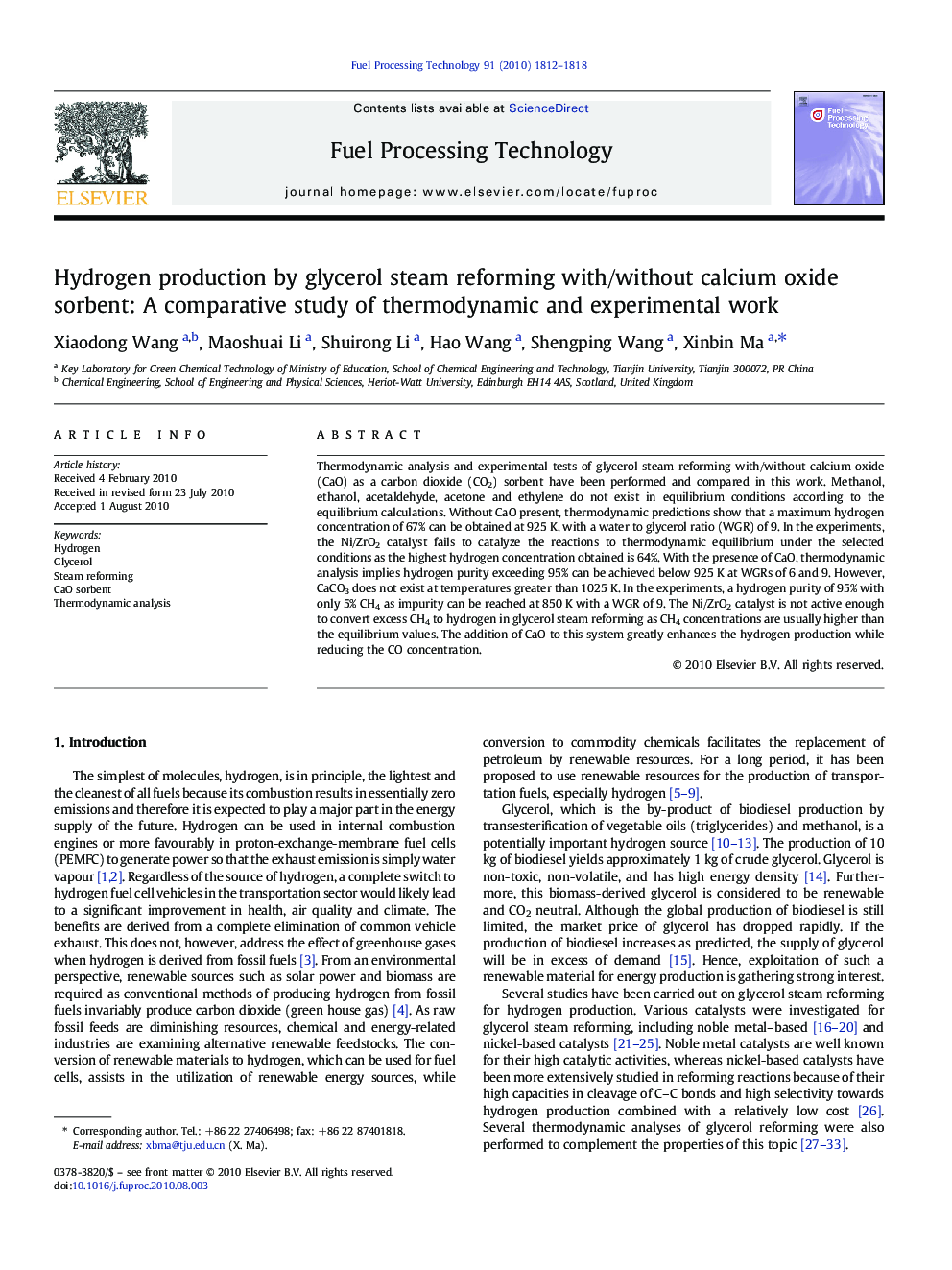| Article ID | Journal | Published Year | Pages | File Type |
|---|---|---|---|---|
| 210606 | Fuel Processing Technology | 2010 | 7 Pages |
Thermodynamic analysis and experimental tests of glycerol steam reforming with/without calcium oxide (CaO) as a carbon dioxide (CO2) sorbent have been performed and compared in this work. Methanol, ethanol, acetaldehyde, acetone and ethylene do not exist in equilibrium conditions according to the equilibrium calculations. Without CaO present, thermodynamic predictions show that a maximum hydrogen concentration of 67% can be obtained at 925 K, with a water to glycerol ratio (WGR) of 9. In the experiments, the Ni/ZrO2 catalyst fails to catalyze the reactions to thermodynamic equilibrium under the selected conditions as the highest hydrogen concentration obtained is 64%. With the presence of CaO, thermodynamic analysis implies hydrogen purity exceeding 95% can be achieved below 925 K at WGRs of 6 and 9. However, CaCO3 does not exist at temperatures greater than 1025 K. In the experiments, a hydrogen purity of 95% with only 5% CH4 as impurity can be reached at 850 K with a WGR of 9. The Ni/ZrO2 catalyst is not active enough to convert excess CH4 to hydrogen in glycerol steam reforming as CH4 concentrations are usually higher than the equilibrium values. The addition of CaO to this system greatly enhances the hydrogen production while reducing the CO concentration.
